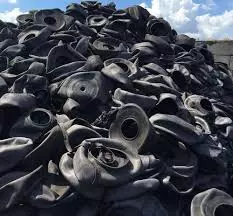Butyl cyanide rubber material for forged steel valve sealing
Butadiene cyanide rubber was first developed in Germany in 1930. It is a copolymer of butadiene and 25% acrylonitrile. Because of its resistance to aging, heat and abrasion, it is superior to natural rubber, so it is valued by the rubber industry. During the Second World War, with the rapid development of weapons and equipment, the heat-resistant and oil-resistant butyl cyanide rubber was used as a war preparation material, and the demand increased sharply. So far, more than 20 countries have produced cyanide rubber, with an annual output of 560,000 tons, accounting for 4.1% of the total synthetic rubber in the world. Due to its excellent heat resistance, oil resistance and mechanical properties, it has become the main product of oil resistant rubber. It accounts for about 80% of all oil-resistant rubber demand.
Butadiene cyanide rubber has made great progress in the 1950s. Up to now, there are more than 300 grades. According to the content of acrylonitrile, in the range of 18% to 50% propylene cyanide content, it can be divided into: extremely high cyanide grade for propylene cyanide content>42%, high cyanide grade for 36%~41% propylene cyanide content, medium and high cyanide grade for 31%~35% propylene cyanide content, medium cyanide grade for 25% to 30% propylene cyanide content, and low cyan grade for 24% propylene cyanide content. The most used in the industry is low cyanide grade cyanide-18 (combined propylene cyanide content 17% to 20%), medium cyanide grade cyanide-26 (combined propylene cyanide content 27% to 30%), and high cyanide grade Butyl cyanide-40 (combined with acrylonitrile content of 36% to 40%). The increase of acrylonitrile content can significantly improve the oil and heat resistance of butane cyanide rubber, but it does mean the higher content makes the better effect, because the increase in propylene cyanide content will also reduce the low temperature performance of rubber.
Butadiene cyanide rubber is mainly used in the manufacture of rubber products applied in petroleum-based hydraulic oil, lubricating oil, kerosene and gasoline producing. The working temperature is -50-100 degrees; for short-term work, it can be used at 150 degrees. The working temperature in air and ethanol glycerol antifreeze is -45-100 degrees. Butan cyanide has poor aging resistance. When the ozone concentration is high, it will quickly age and crack. It is not suitable for long-term work in high temperature air, nor can it work in phosphate anti-combustion hydraulic oil.
The general physical properties of Butadiene cyanide rubber: 1) Butadiene cyanide rubber is generally black, the color can be adjusted according to customer needs, but it may require some additional cost and may affect the use effect of rubber. 2) Butadiene cyanide rubber has a slight smell of rotten eggs. 3) According to the oil resistance characteristics and temperature range of the cyanide rubber, determine whether the material of the seal is cyanide rubber.
